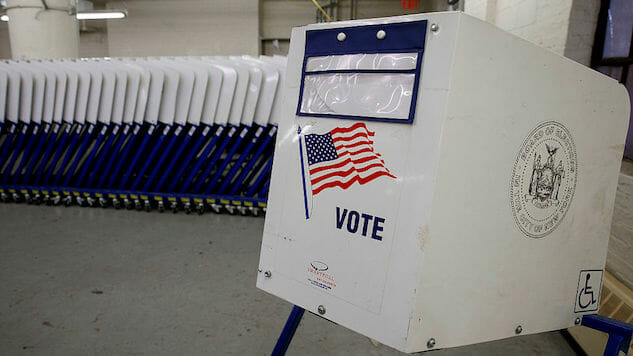Introducing Endless Mode: A New Games & Anime Site from Paste
The Supreme Court ruled in favor of Ohio on Monday, declaring that a state can remove a citizen from its voting rolls if they skip voting in one election and fail to respond to a notice, as the New York Times reports. The ruling was five to four, with the more right-leaning judges in the majority, and it comes just in time for the midterm elections.
Federal laws prohibit states from removing citizens from voter rolls “by reason of the person’s failure to vote.” However, they do allow the state election officials to send a notice if they believe the citizen has moved out of the state. The Supreme Court ruling sets the precedent that failure to vote in one election is enough of a reason to send out a notice. Failure to respond to that notice can now result in the removal of the citizen from the voting roll, even if they still live in the state and wish to vote in the next election.
Ohio has always enforced this rule with voting rolls and is considered the most aggressive state when it comes to implementing regulations. If a citizen skips voting in one federal election, they are sent a notice and if they fail to respond, their names are removed. It is the fastest-moving voting roll purging system of any state and it had remained uncontested until now.
Larry Harmon, who lives near Akron, Ohio, was the central figure in this case. In 2012, Harmon, a software engineer and Navy veteran, opted out of voting in the presidential election because he was “unimpressed by the candidates.” He had voted in the 2004 and 2008 presidential elections, but not the 2010 and 2014 midterm elections. He wished to vote in 2015 on the initiative to legalize of marijuana in Ohio, which he was strictly against. However, when he arrived at the polls, he found his name had been removed from the voting rolls.
In 2016, the United States Court of Appeals ruled in favor of Harmon, accusing Ohio of violating the National Voter Registration Act of 1993 by arguing that failure to vote shouldn’t be a “trigger” to send a notice and remove a citizen from the rolls. In the Supreme Court brief, Harmon’s lawyers revealed that without the Court of Appeals ruling “the ballots of more than 7,500 eligible Ohioans would have gone uncounted in the November 2016 election.” The Supreme Court disagreed. According to CNN, Justice Samuel Alito wrote for the conservative majority:
We have no authority to second-guess Congress or to decide whether Ohio’s supplemental process is the ideal method for keeping its voting rolls up to date. The only question before us is whether it violates federal law.
It isn’t a coincidence that this ruling passed right around midterm time, as Republicans fear they will lose control of Congress. More liberal judges were against the ruling due to the history of voter suppression and the fact that the National Voter Registration Act was meant to address this suppression. Justice Sonia Sotomayor wrote:
Congress enacted the NVRA against the backdrop of substantial efforts by states to disenfranchise low-income and minority voters, including programs that purged eligible voters from registration lists because they failed to vote in prior elections. The Court errs in ignoring this history and distorting the statutory text … ultimately sanctioning the very purging that Congress expressly sought to protect against.
